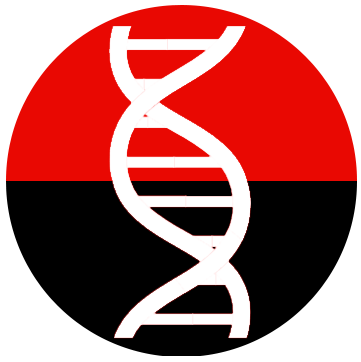Peter Keyel, Ph.D.
Email: peter.keyel@ttu.edu
Phone: 1(806)834-6248

Education
- PhD University of Pittsburgh, 2006
- BS University of Minnesota Duluth, 2001
Research Interests
Inflammation is a crucial component of many diseases, regardless of whether they are caused by autoimmunity like lupus, pathogenic microbes like Streptococcus pyogenes, tumors, or even particles and chemicals. This inflammation depends on cellular structures and key function of cells, including macrophages and other innate immune cells, to respond to the pathogenic conditions. My lab uses cellular and molecular approaches to understanding two aspects of inflammation: cellular resistance to pore-forming toxins, and control of inflammation by the macrophage-secreted endonuclease Dnase1L3.
Identifying the molecular mechanisms required for membrane repair will help us regulate the inflammatory response, as well as apply that knowledge to other diseases directly related to membrane damage, such as muscular dystrophies and septic cardiomyopathy. Unfortunately, the genetic and post-translational regulators of membrane repair are poorly understood, as are the repair mechanisms themselves. To determine the mechanisms of repair, my lab aims to determine the protein signaling components and lipid membrane requirements for membrane repair. Three membrane repair pathways have been described for SLO: patch repair, clogging, and intrinsic repair.
One key unknown with both patch repair and clogging is how repair proteins target the breach once cytoplasmic Ca2+ levels rise above the threshold concentration needed for membrane binding. The third mechanism of membrane repair is intrinsic repair, a novel finding of ours, that is the sequestration and shedding of toxins on cholesterol-enriched microvesicles. While proteins like Endosomal Sorting Complex Required for Transport (ESCRT)-III catalyze shedding, and annexins are shed on microvesicles, shedding can occur in the absence of proteins. Thus, the lipid determinants needed to promote shedding, and the signaling pathway that targets ESCRT proteins and annexins to breaches in the plasma membrane, remain key unknowns.
Since my early work showed that membrane lipids can drive shedding in the absence of proteins, my lab is further determining the lipid components required for repair. To this end, we are taking a molecular genetic approach to develop the human pathogen Leishmania major as a genetic system for understanding membrane repair. In contrast to mammalian cells, L. major is only sensitive to SLO in the absence of sphingolipids, despite equivalent SLO binding with and without sphingolipids. These data suggest that sphingolipids are critical to protecting the membrane.
The other focus of my lab is the control of inflammation by the macrophage-secreted endonuclease Dnase1L3. Reduction or absence of Dnase1L3 activity is associated with sporadic and pediatric-onset lupus, respectively, due to elevated anti-DNA autoantibodies. We are exploring mechanisms by which Dnase1L3 loss causes elevated anti-DNA autoantibodies. We are further engineering Dnase1L3 as a treatment for lupus. Since DNA degradation is upstream of the inflammatory pathways, we anticipate that Dnase1L3 replacement therapy will serve as a specific treatment for lupus with fewer side effects than current treatment options.
Selected Publications
-
- Engavale M, Hernandez CJ, Infante A, LeRoith T, Radovan E, Evans L, Villarreal J, Reilly CM, Sutton RB, and PA Keyel. (2023) Deficiency of macrophage-derived Dnase1L3 causes lupus-like phenotypes in mice. J Leukoc Biol. 114(6):547-556.
- Haram CS, Moitra S, Keane R, Kuhlmann FM, Frankfater C, Hsu FF, Beverley SM, Zhang K, and PA Keyel. (2023). The sphingolipids ceramide and inositol phosphorylceramide protect the Leishmania major membrane from sterol-specific toxins. J Biol Chem. 299(6):104745
- Thapa R, and PA Keyel. (2023). Patch repair protects cells from the small pore-forming toxin aerolysin. J Cell Sci. 136(8).
- Haram CS, Moitra S, Keane R, Breslav E, Zhang K, and PA Keyel. (2022). Deciphering the Molecular Mechanism and Function of Pore-Forming Toxins using Leishmania major. J Vis Exp. (188).
- McCord JJ, Engavale M, Masoumzadeh E, Villarreal J, Mapp B, Latham MP, Keyel PA, Sutton RB. (2022). Structural features of Dnase1L3 responsible for serum antigen clearance. Commun Biol.5(1):825.
- Ray S, Roth R, and PA Keyel. (2022). Membrane repair triggered by cholesterol-dependent cytolysins is activated by mixed lineage kinases and MEK. Sci Adv. 8(11):eabl6367.
- Romero M, Keyel M, Shi G, Bhattacharjee P, Roth R, Heuser JE, and PA Keyel. (2017). Intrinsic repair protects cells from pore-forming toxins by microvesicle shedding. Cell Death Differ, 24(5):798-808.
- Shi G, Abbott KN, Wu W, Salter, RD, and PA Keyel. (2017). Dnase1L3 Regulates Inflammasome-Dependent Cytokine Secretion. Front. Immunol. 8:522
- Heid ME, Keyel PA, Kamga C, Shiva S, Watkins SC, Salter RD. (2013). Mitochondrial reactive oxygen species induces NLRP3-dependent lysosomal damage and inflammasome activation. J Immunol. 191(10):5230-8.
- Keyel, PA, Tkacheva OA, Larregina AT and RD Salter. (2012) Coordinate Stimulation of Macrophages by Microparticles and TLR Ligands Induces Foam Cell Formation. J Immunol, 189(9):4621-4629. PMCID: PMC3478499
- Keyel, PA, Loultcheva L, Roth R, Salter RD, Watkins SC, Yokoyama WM and J.E. Heuser. (2011) Streptolysin O Clearance Via Sequestration Into Blebs That Bud Passively From the Plasma Membrane. J. Cell Sci., 124(14): 2414-2423. PMCID: PMC3124372
- Cooper MA, Elliott JM, Keyel, PA, Yang L, Carrero JA, and WM Yokoyama. (2009) Cytokine-Induced Memory-Like Natural Killer Cells. PNAS, 106(6):1915-1919. PMCID: PMC2644138
- Tripathy SK, Keyel PA, Yang L, Pingel JT, Cheng TP, Schneeberger A and WM Yokoyama. (2008) Continuous Engagement of a Self-MHC-specific Activation Receptors Induces NK Cell Tolerance. J. Exp. Med., 205(8): 1829-1841. PMCID: PMC2525593
- Keyel PA, Mishra SK, Roth R, Heuser JE, Watkins SC, Traub LM. (2006) A single common portal for clathrin-mediated endocytosis of distinct cargo governed by cargo-selective adaptors. Mol Biol Cell. 17(10):4300-17
Department of Biological Sciences
-
Address
Department of Biological Sciences, Texas Tech University, Box 43131 Lubbock, TX 79409 -
Phone
806.742.2715 -
Email
biology@ttu.edu

